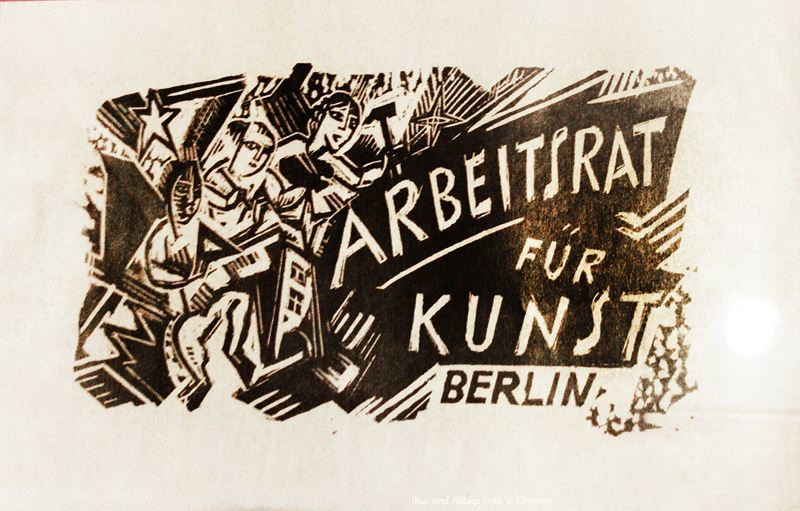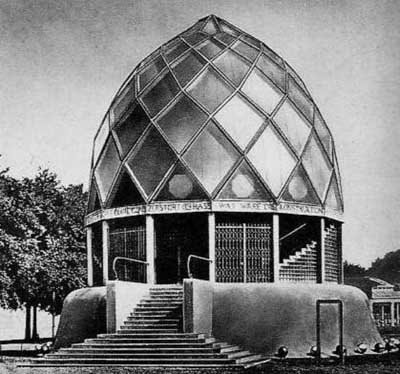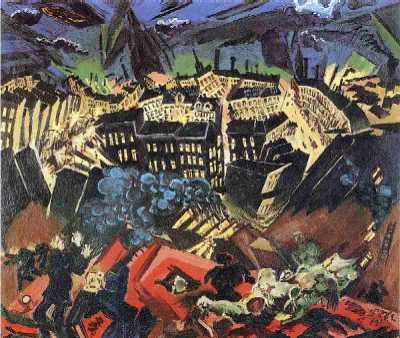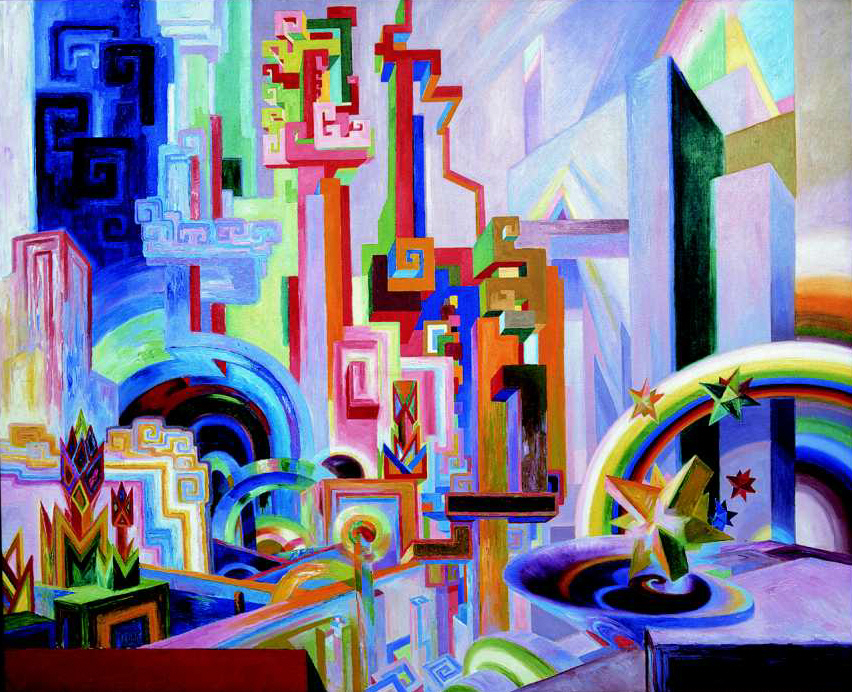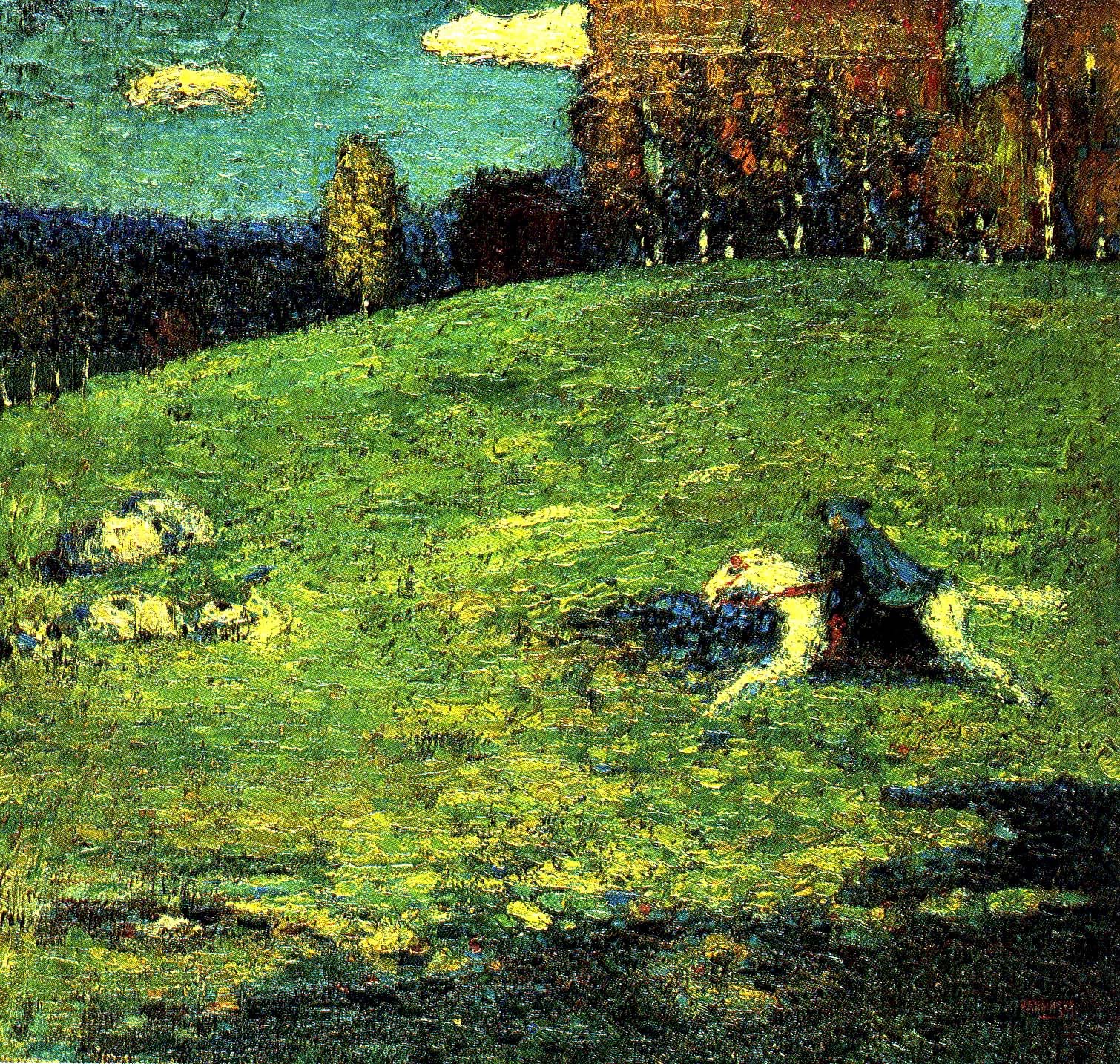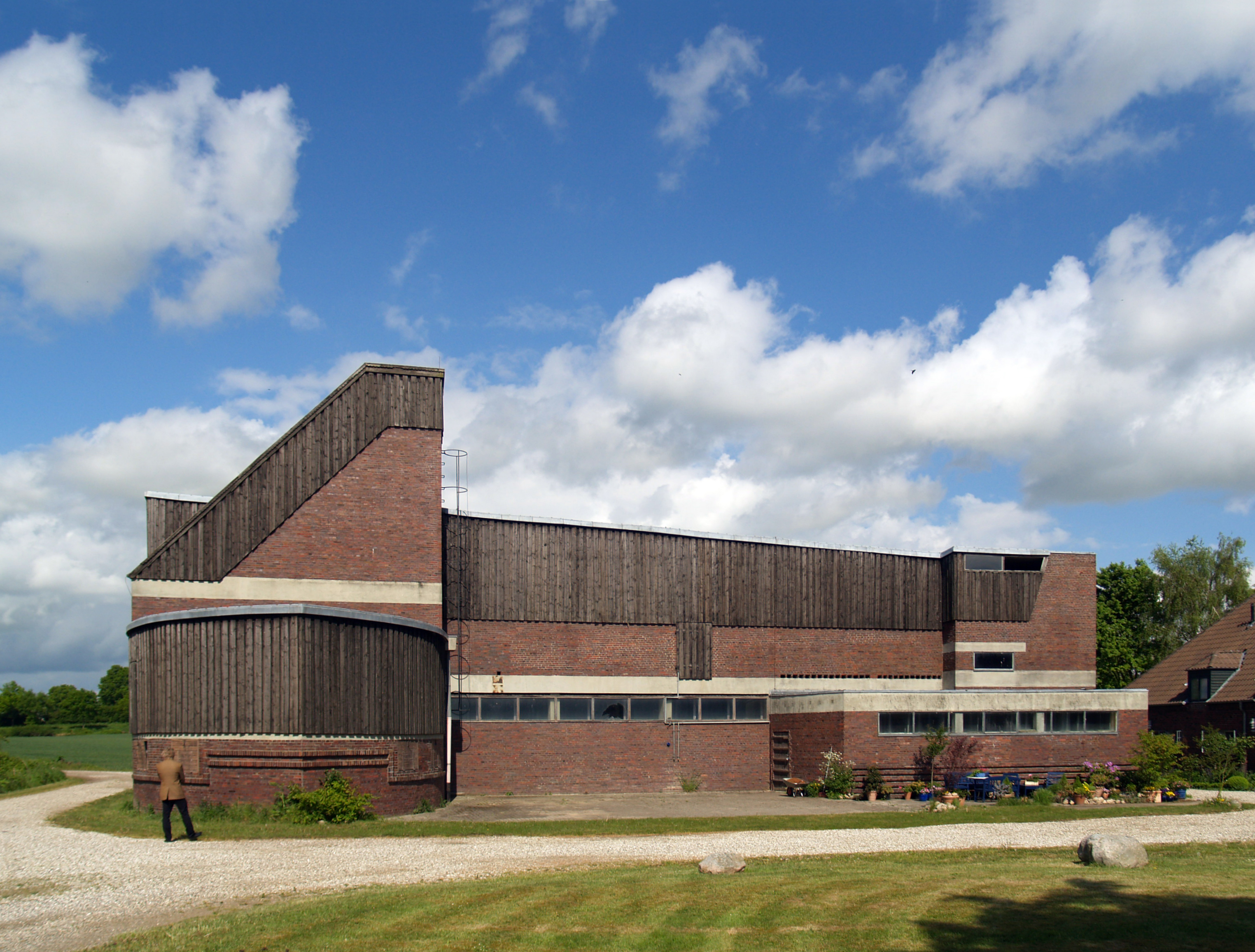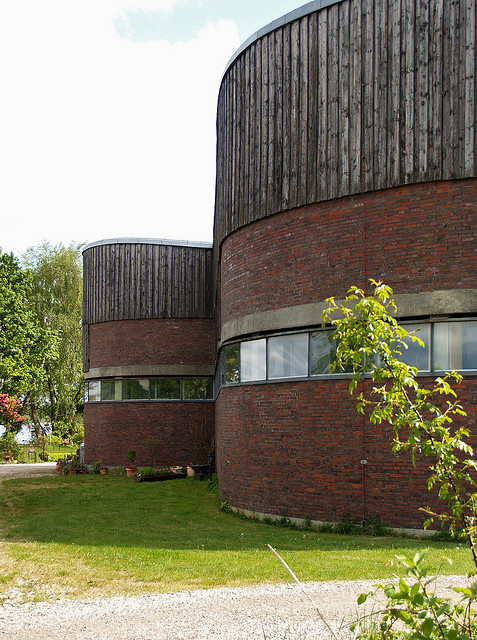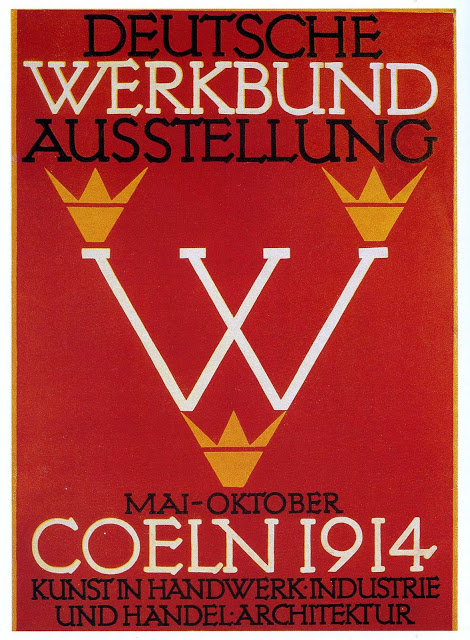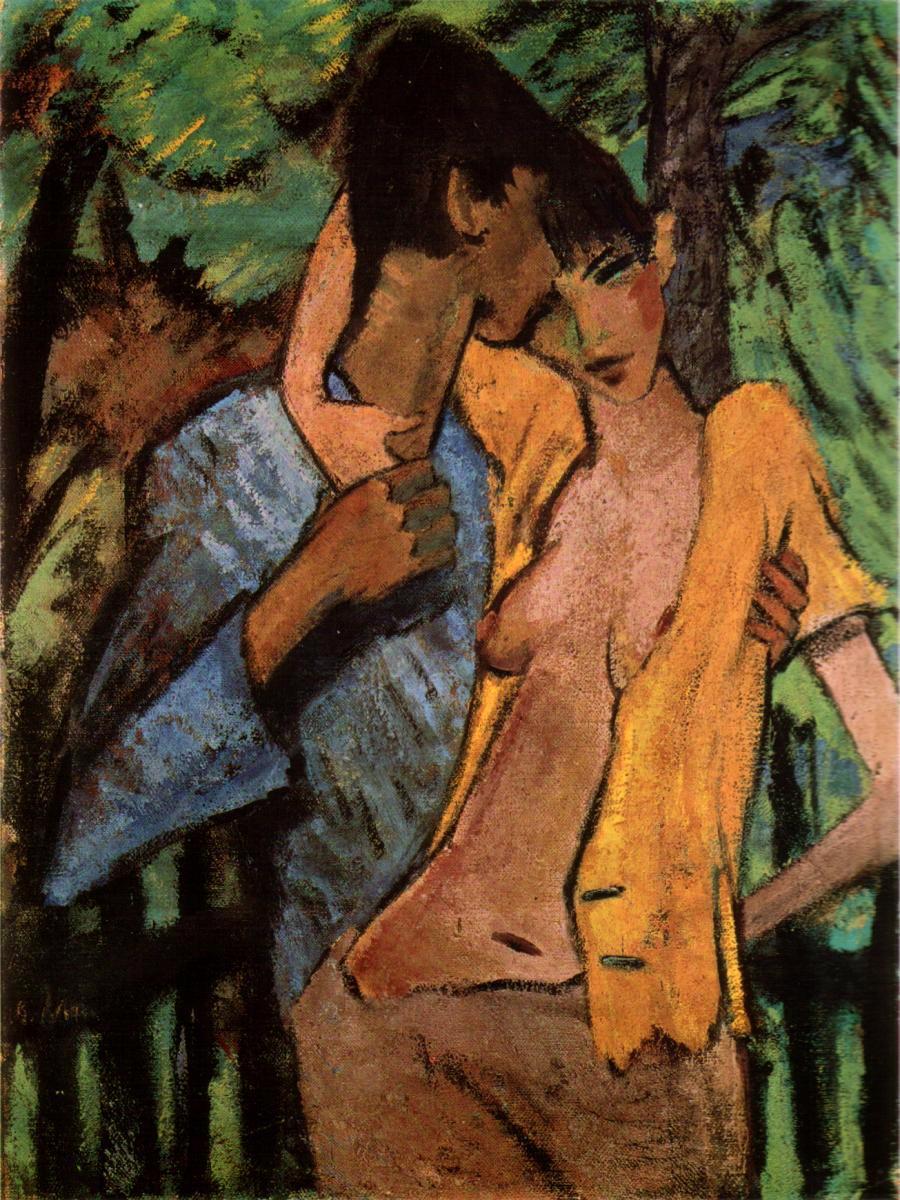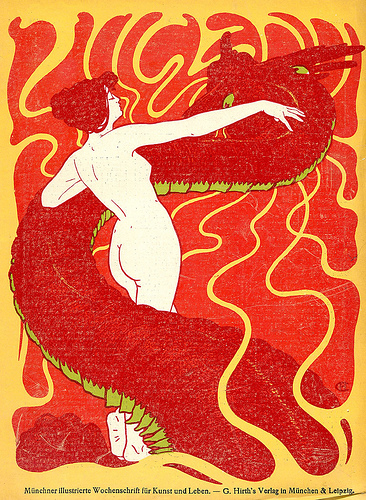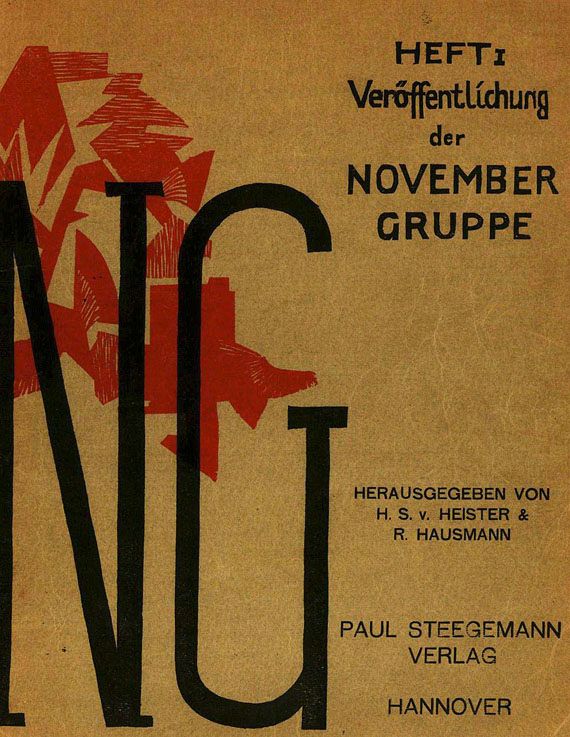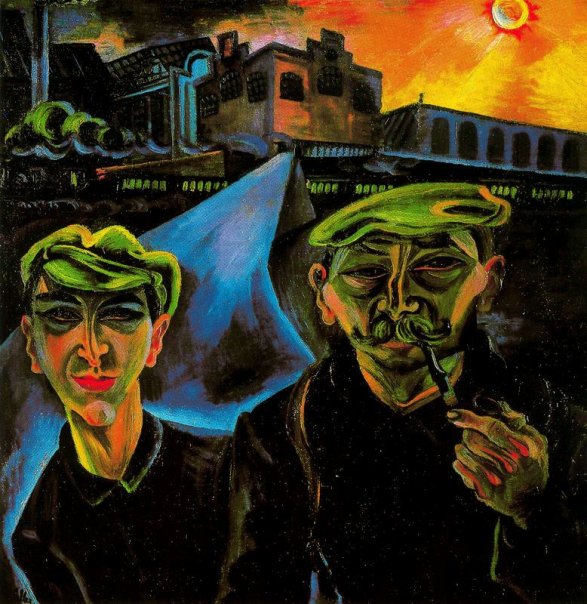 |
||||
|
German Art Movements of the Early 20th Century
[Last Updated January 2013] The following is an incomplete list of German art movements from the Early 20th Century. Why is it incomplete? The reason is because between 1900 and 1945 Germany went through two world wars, a long list of technological and cultural changes, and had so many different protest art movements that sometimes it is difficult to tell them all apart. Many of the artists were in multiple groups over the years, sometimes changing their artistic styles along the way. It is truly a mess to sort through. However in the interest of academics, we have done so... and we have split it down into the major art movements of importance. That means we are missing some of the less important art movements, and for that we apologize. Certain really important movements, like Bauhaus, we have kept separate and independent. To keep it simple we have also broken down these German art movements Alphabetically. This page includes the following movements:
Arbeitsrat für Kunst (Workers Council for Art)
The Arbeitsrat für Kunst art movement (also sometimes mistakenly referred to as German 'Soviet Art') started with the union of architects, painters, sculptors and art writers based mostly in Berlin from 1918 to 1921. The movement developed as a response to the Workers and Soldiers councils from the same time period and was dedicated to bringing new developments in art and architecture to the German audience. The Arbeitsrat für Kunst council worked closely with other artist, design and architecture groups over the years, including Bauhaus, the Novembergruppe and the Deutscher Werkbund. ie. Some of the architects in Arbeitsrat für Kunst later united in the groups 'Glass Chain', 'Der Ring' and others. Many of the members of Arbeitsrat für Kunst were influential in the formation of Bauhaus and academically. Collectively the artists of Arbeitsrat für Kunst believed in one thing, perhaps best summarized from this excerpt from a flyer dated March 1st 1919: "Art and the people must form an entity. Art shall no longer be a luxury of the few but should be enjoyed and experienced by the broad masses. The aim is an alliance of the arts under the wing of great architecture." The Arbeitsrat für Kunst artists wanted to:
In particular Arbeitsrat für Kunst was reacting to the shortage of young architects who had been killed in World War I. The founding members of Arbeitsrat für Kunst were Bruno Taut, Walter Gropius acting from 1919, César Klein, and Adolf Behne as Chairman. Other signatories of the first manifesto were:
As the years went by over a hundred artists and architects from Germany and other countires supported Arbeitsrat für Kunst and participated in exhibitions. Some of these people were: Karl Paul Andrae, Walter Curt Behrendt, Max Berg, Paul Cassirer, Nicolay Diulgheroff, Hermann Finsterlin, Paul Gösch, Otto Gothe, Wenzel Hablik, Oswald Herzog, Bernhard Hoetger, Willy Jaeckel, Käthe Kollwitz, Carl Krayl, Mechtilde Lichnowsky, Wassili Luckhardt, Paul Mebes, Ludwig Meidner, Julius Meier-Graefe, Adolf Meyer, Michael Mejer, Erich Mendelsohn, Johannes Molzahn, Karl Ernst Osthaus, Hans Poelzig, Paul Schmitthenner, Herman Sörgel, Milly Steger, Heinrich Tessenow, Wilhelm Worringer How did the get so many members? Arbeitsrat für Kunst recruited the public to participate in art and architectural exhibitions and also publications. Its exhibitions were open to non-architects and also for non-members of the group to take part, with designs, models, sketches and sculptures. They believed that by doing so the free-flow of ideas would create spectacular works of of art and architecture. Two of their important exhibitions were: "Ausstellung für unbekannte Architekten",(Exhibition for unknown architects ) Berlin und Weimar, 1919 "Neues Bauen" (New building), Berlin, 1920
|
|
|||
|
|
||||
|
Der Blaue Reiter (The Blue Rider)Right: Wassily Kandinsky, Der Blaue Reiter, 1903 A group of artists in Munich, Germany formed Der Blaue Reiter, a secessionist art movement which lasted from 1911 until 1914 and along side Die Brücke was fundamental to the German Expressionism movement which came after. The group name is believed to be derived from Wassily Kandinsky 1903 painting. The group formed in response to the rejection of Kandinsky's painting "Last Judgement" from an exhibition, an act which sparked an artistic rebellion. The group was founded by a mixture of German artists (Franz Marc, August Macke and Gabriele Münter) and immigrants from Russia (Wassily Kandinsky, Alexej von Jawlensky, Marianne von Werefkin. The members were partly from Neue Künstlervereinigung München (NKVM, Munich New Artist's Association), an association which formed in 1909, hosted 3 traveling exhibitions between 1909 and 1912. Other members of the Der Blaue Reiter group included Lyonel Feininger, Albert Bloch, Paul Klee and others. Der Blaue Reiter didn't have a central artistic manifesto, but was instead centred around Kandinsky and Franz Marc. Name Controversy There is an argument amongst art historians whether the name of the group was really from the 1903 painting "Der Blaue Reiter". Professor Klaus Lankheit believes the title of the painting was originally something else and it was later overwritten, but its unclear what year the painting was renamed. According to Kandinsky's writing during the 1930s the name is derived from Franz Marc's enthusiasm for horses and Kandinsky's love of riders, and both artists liked the colour blue. According to Kandinsky, blue is the colour of spirituality: the darker the blue, the more it awakens human desire for the eternal. See also Kandinsky's 1911 book 'On the Spiritual in Art'. Within the group, artistic approaches and aims varied from artist to artist; however, the artists shared a common desire to express spiritual truths through their art. They believed in the promotion of modern art; the connection between visual art and music; the spiritual and symbolic associations of colour; and a spontaneous, intuitive approach to painting. Members were interested in European medieval art and primitivism, as well as the contemporary, non-figurative art scene in France. As a result of their encounters with cubist, fauvist and Rayonist ideas, they moved towards abstraction. Der Blaue Reiter organized exhibitions in 1911 and 1912 that toured Germany. They also published an almanac featuring contemporary, primitive and folk art, along with children's paintings. In 1913 they exhibited in the first German Herbstsalon. The group was disrupted by the outbreak of the First World War in 1914. Franz Marc and August Macke were killed in combat. Wassily Kandinsky, Marianne von Werefkin and Alexej von Jawlensky were forced to move back to Russia because of their Russian citizenship. There were also differences in opinion within the group. As a result, Der Blaue Reiter was short-lived, lasting for only three years from 1911 to 1914. In 1923 Kandinsky, Feininger, Klee and Alexej von Jawlensky formed Die Blaue Vier (the Blue Four) group, and exhibited and lectured together in the United States in 1924. An extensive collection of paintings by Der Blaue Reiter is exhibited in the Städtische Galerie in the Lenbachhaus in Munich. Almanac Conceived in June 1911, Der Blaue Reiter Almanach (The Blue Rider Almanac) was published in early 1912, by Piper, Munich, in an edition of 1100 copies; on 11 May, Franz Marc received a first print. The volume was edited by Kandinsky and Marc; its costs were underwritten by the industrialist and art collector Bernhard Koehler, a relative of Macke. It contained reproductions of more than 140 artworks, and 14 major articles. A second volume was planned, but the start of World War I prevented it. Instead, a second edition of the original was printed in 1914, again by Piper. The contents of the Almanac included:
The art reproduced in the Almanac marked a dramatic turn away from a Eurocentric and conventional orientation. The selection was dominated by primitive, folk, and children's art, with pieces from the South Pacific and Africa, Japanese drawings, medieval German woodcuts and sculpture, Egyptian puppets, Russian folk art, and Bavarian religious art painted on glass. The five works by Van Gogh, Cézanne, and Gauguin were outnumbered by seven from Henri Rousseau and thirteen from child artists. First exhibition December 18, 1911, the "First exhibition of the editorial board of Der Blaue Reiter" (Erste Ausstellung der Redaktion Der Blaue Reiter) opened at the Heinrich Thannhauser's Moderne Galerie in Munich, running through the first days of 1912. 43 works by 14 artists were shown: paintings by Henri Rousseau, Albert Bloch, David Burliuk, Wladimir Burliuk, Heinrich Campendonk, Robert Delaunay, Elisabeth Epstein, Eugen von Kahler, Wassily Kandinsky, August Macke, Franz Marc, Gabriele Münter, Jean Bloé Niestlé and Arnold Schönberg, and an illustrated catalogue edited. From January 1912 through July 1914, the exhibition toured Europe with venues in Cologne, Berlin, Bremen, Hagen, Frankfurt, Hamburg, Budapest, Oslo, Helsinki, Trondheim and Göteborg. Second exhibition February 12 through April 2, 1912, the "Second exhibition of the editorial board of Der Blaue Reiter" showed works in "Black & White" (Zweite Ausstellung der Redaktion Der Blaue Reiter, Schwarz-Weiß) at the "New Art" Gallery of Hans Goltz (Neue Kunst Hans Goltz) in Munich. Other shows The artists of Der Blaue Reiter also participated in:
Members
"Der Ring"
Der Ring was an architectural collective founded in 1926 in Berlin. It emerged out of expressionist architecture with a functionalist agenda. Der Ring was a group of young architects, formed with the objective of promoting Modernist architecture. It took a position against the prevailing architecture of the time, Historicism. With the rise of National Socialism and the increasing difficulty between Hugo Haring and the other members, Der Ring dissolved in 1933. "In the meantime the German architects whose work follows newly discovered laws of design, have founded a new association. 'The Ring' — a figure of self-contained form without a head — unites a group of like-minded people to pursue their ideals in unison." — The magazine Die Form in issue No. 10, 1926. Besides the search for a new beginning in building design, the members of the "Ring" were looking for new ways of building. Unlike other groups, be they of the time or before the time like the Glass Chain or the Arbeitsrat für Kunst, they did not have an elaborated programme, that would have provided them with an ideological background. The members often had different attitudes when faced with tasks. Häring and Scharoun rather followed an "organic functionalism" whereas Mies and Gropius were more interested in the possibilities of industrial building. These different attitudes were reflected in the planning of large scale planned communities of the time, in which the members of the Ring were participating. Six members, Bartning, Forbat, Gropius, Häring, Henning und Scharoun, were part of the project of Siemensstadt in Berlin (1929 through 1931). Some of them later became leading members in the Deutscher Werkbund. Ten of them took part with their buildings in the exhibition of the Werkbund, "Die Wohnung" in Stuttgart-Weißenhof (Weißenhofsiedlung), which was organised by Mies, who had been chairman of the Werkbund since 1926. The driving force behind the founding of the Ring were Hugo Häring and Ludwig Mies van der Rohe who shared an office in Berlin at the time. Both were already members of the Zehner-Ring (Ring of Ten), that was founded two years before with similar aims. Because its work didn't produce any results worth mentioning — as the Luckhardt brothers put it — they decided to extend the group in terms of geography and membership. In a letter dated April 1926, they asked several architects in Germany and Austria to join. Shortly after they were invited to a constitutional meeting in Berlin. The members of the Novembergruppe (November-Group), which had been founded in 1918 and whose members, a collective of painters, sculptors and architects, were seeking to transpose the impulse of the November Revolution into the arts, were also asked to take part.
On May 29, 1926, 16 of them met in the office of Mies, wrote a programme and elected Hugo Häring their secretary. Members
And the nine members of the "Ring of Ten" from Berlin:
Deutscher Werkbund (German Work Federation)
Founded in 1907 the Deutscher Werkbund was a German association of architects, designers, artists and industrialists, many of whom later either influenced or were involved in the creation of the Bauhaus school of design. Deutscher Werkbund initial purpose was to establish a partnership between manufacturing factories with designers to improve competitiveness of German products. Their motto was: Vom Sofakissen zum Städtebau (from sofa cushions to city-building). Deutscher Werkbund thus started as more of a state-sponsored effort to create jobs than as an artistic movement. They worked to integrate traditional crafts with industrial mass-production techniques, to make Germany more competitive with England and the United States. Deutscher Werkbund was founded in 1907 in Munich by Hermann Muthesius and the group continued to operate until 1938 (some sources say 1934) when they were shut down by the Nazis. The leader of the group, Muthesius, was the author of the exhaustive three-volume "The English House" of 1905. The book was a survey of the English Arts and Crafts movement and Muthesius later accused of being both a cultural ambassador and an industrial spy. The Deutscher Werkbund group originally included twelve architects and twelve business firms. The initial group of architects included Peter Behrens, Theodor Fischer (who served as its first president), Josef Hoffmann, Bruno Paul, and Richard Riemerschmid. Other architects who later joined included Heinrich Tessenow and the Belgian Henry van de Velde. The Werkbund commissioned van de Velde to build a theatre for its 1914 Cologne Exhibition in Cologne, the theatre which turned out to be his best work, and which only stood for one year before being destroyed in World War I. The group's most famous member was architect Ludwig Mies Van der Rohe, who served as Architectural Director. Deutscher Werkbund Timeline
1907, Establishment of the Werkbund in Munich
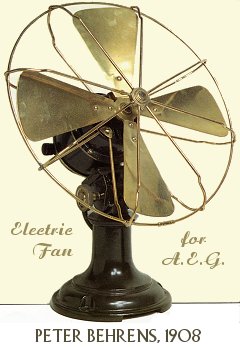
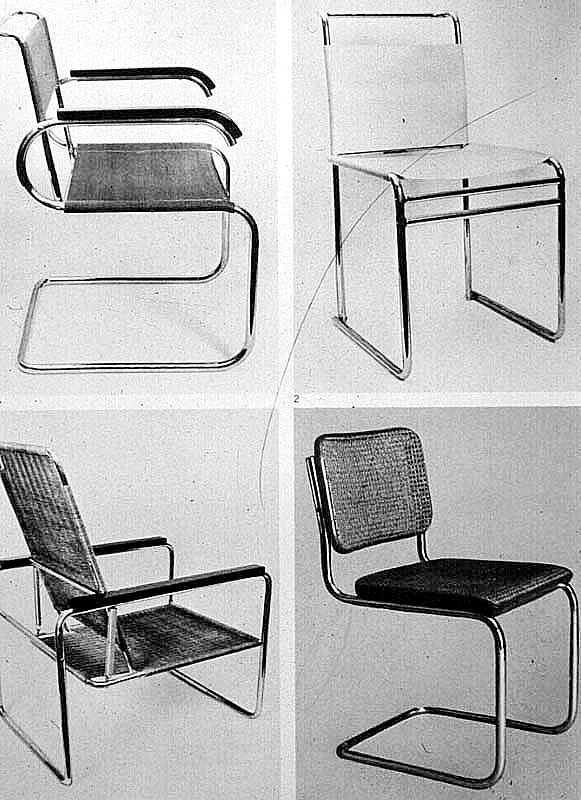
Die Brucke (The Bridge)
In 1905 a group of German expressionist artists in Dresden formed "Die Brücke". Die Brücke is sometimes compared to Fauvism. Both movements shared an interest in primitive art and in expressing extreme emotion through unusual use of colour. Both Die Brucke and Fauvism leaned towards crude drawings and yet rejected complete abstraction because it was important to them that their paintings showed feeling. However the Die Brücke artists' paintings of city streets and sexually charged scenes make Fauvism seem tame by comparison. The founding members of Die Brucke were Fritz Bleyl (1880–1966), Erich Heckel (1883–1970), Ernst Ludwig Kirchner (1880–1938) and Karl Schmidt-Rottluff (1884–1976). Later they were joined by Emil Nolde (1867–1956) and Max Pechstein (1881–1955) in 1906. Otto Mueller (1874–1930) joined in 1910. The group had a strong impact on the evolution of modern art in the 20th century and Expressionism. The four founding members were Jugendstil architecture and met through the Königliche Technische Hochschule (technical university) of Dresden, where Kirchner and Bleyl began studying in 1901 and became close friends in their first term. They discussed art, nature and radical idealogy. The Die Brücke artists aimed to reject the traditional academic style of art and find a bridge (hence the name) between the past and the present artistic movements. They paid tribute to Albrecht Dürer, Matthias Grünewald and Lucas Cranach the Elder, but wanted to incorporate new ideas from contemporary international avant-garde movements. The group revived older media such as woodcut prints and invented the printmaking technique of linocut, although at the time described their work as traditional woodcuts. They developed a common style based on vivid color, emotional tension, violent/sexual imagery and drew influences from primitivism. Initially they concentrated on urban subject matter in Dresden, but began going on expeditions to southern Germany thanks to trips arranged by Mueller. These trips produced quite a few nudes and rural scenes. The group members initially tried to "isolated" themselves from their own Dresden bourgeois backgrounds and surround themselves with the working class and bohemians. Erich Heckel rented out an empty butcher's shop on the Berlinerstrasse in Friedrichstadt as a studio. Fritz Bleyl described the studio as: "that of a real bohemian, full of paintings lying all over the place, drawings, books and artist’s materials — much more like an artist’s romantic lodgings than the home of a well-organised architecture student." Ernst Ludwig Kirchner's home became a place of casual love-making and frequent nudity between the artists and models there. They used models from their social circle, usually lovers instead of professionals. They used 15 minute poses to encourage speed and spontaneity. Fritz Bleyl described one such model, Isabella, a fifteen-year-old girl from the neighbourhood, as "a very lively, beautifully built, joyous individual, without any deformation caused by the silly fashion of the corset and completely suitable to our artistic demands, especially in the blossoming condition of her girlish buds." The Die Brücke artists composed a manifesto (mostly written by Kirchner), which was then carved on wood so they could mass produce it. The manifesto asserted a new generation "who want freedom in our work and in our lives, independence from older, established forces." In September and October 1906, the first Die Brücke group exhibition was held. The show focused on the female nude and was displayed in the showroom of K.F.M. Seifert and Co. in Dresden. Bleyl married in 1907 and needing money to support his family left the group. Between 1907 and 1911 the Die Brücke artists stayed at the Moritzburg lakes during the summer and would visit the island of Fehmarn. In 1911, Kirchner moved to Berlin, founded a private art school, MIUM-Institut, in collaboration with Max Pechstein. His goal was to promote "Moderner Unterricht im Malen" (modern teaching of painting). The school was a financial disaster and closed a year later. His goal of promoting modern painting may have influenced the Der Blaue Reiter group (The Blue Rider), formed in Munich in 1911. In 1913, Kirchner wrote Chronik der Brücke (Brücke chronicle), summarizing the history of the group, an act which led to the end of Die Brücke. The legacy of Die Brücke lives on however. A successor group formed in 1919, the Dresdner Sezession, led by painter Conrad Felixmüller. The Brücke Museum in Berlin is named after the Die Brücke artists.
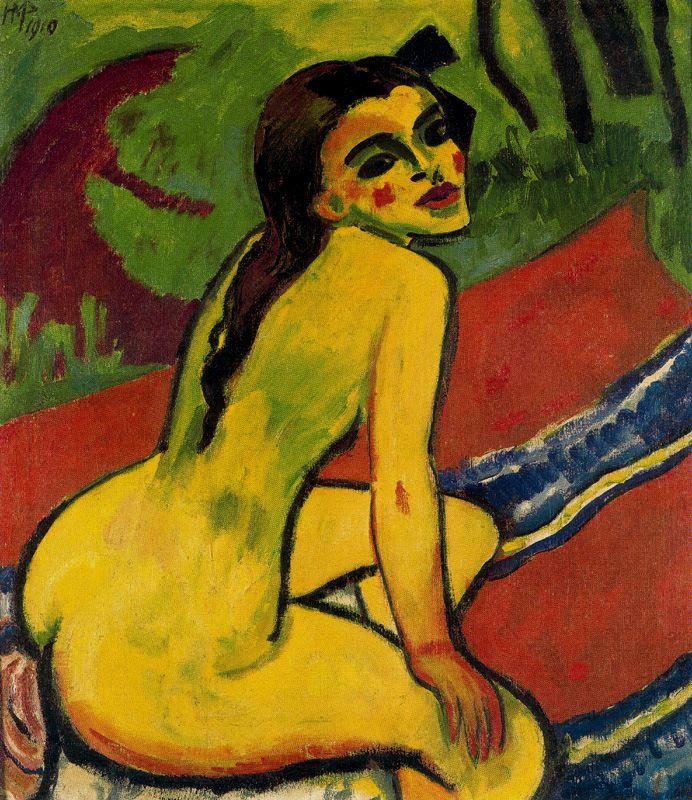
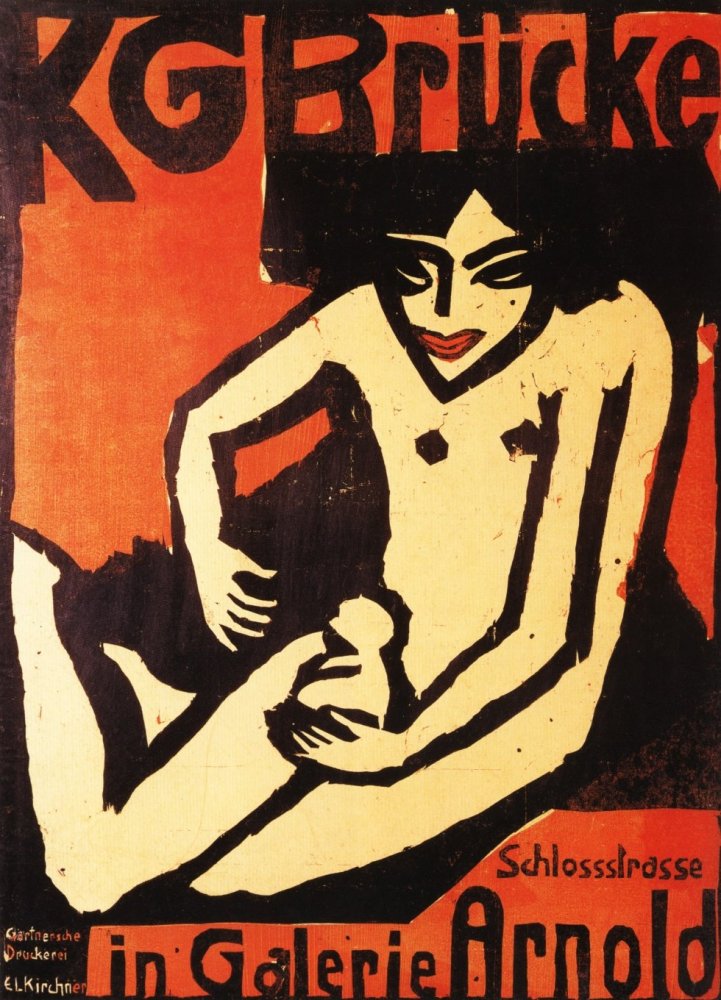
Jugendstil
Around the mid 1890s an artistic and architectural style arose known as Jugendstil. It was essentially the German branch of the Art Nouveau movement. The style continued up until 1910. The style derived its name from the Munich magazine "Die Jugend" (The Youth), which featured Art Nouveau designs. Art historians agree that there are essentially two phases found in the Jugendstil movement: Floral Jugendstil (the earliest phase, circa 1895 to 1900), drawing inspiration from British Art Nouveau and Japanese art / prints. Abstract Jugendstil (the later phase, circa 1901 to 1910), which was influenced by the Viennese work of the Belgian architect and designer Henry van de Velde.
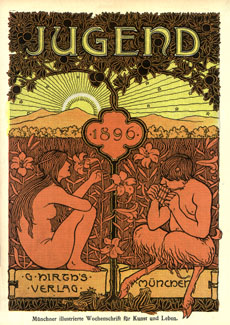
Novembergruppe (The November Group)
Novembergruppe was a group of German expressionist artists and architects. Formed on December 3rd 1918, they took their name from the month of the German Revolution because they wanted to be considered revolutionaries and rebels. The Novembergruppe artists described themselves as radical and revolutionary, seeking to change how art is taught and how laws affect artists. The radical artists campaigned to have a greater say in the organisation of art schools and new laws concerning artists. The plethora of styles between the artists makes classification as any one style difficult. Stylistically the group was a fusion of Cubism, Futurism and Expressionis. Sometimes jokingly called Kubofutoexpressionismus. Founded mostly by painters César Klein and Max Pechstein (the two ringleaders) their style of expressionist art included their shared socialist ethics. Other founding members included painters Georg Tappert, Moriz Melzer and Heinrich Richter. At the first meeting of Novembergruppe on March 12th 1918 they were joined by Karl Jakob Hirsch, Bernhard Hasler, Richard Janthur, Rudolf Bauer, Bruno Krauskopf, Otto Freundlich, Wilhelm Schmid, the sculptor Rudolf Belling and the architect Erich Mendelsohn. This became their first working committee. But they wouldn't last long. By December 1918 the group merged with Arbeitsrat für Kunst. Since their goals were similar to Arbeitsrat für Kunst the Novembergruppe aimed to support a socialist revolution in Germany. Their key objective was to bring art to the people by influencing public and cultural aspects of German society. They frequently organized art festivals, costume parties, studio tours, literary and musical events and also the Great Berlin Art Exhibition of June 1924.
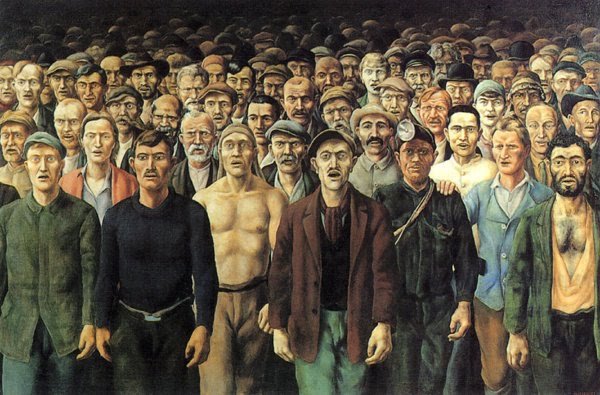
Schisms within the Art Movement In 1921 artists from the extreme left wing of Novembergruppe called for an end to the "bourgeois development" of the artists. They believed some artists, namely the right Novembergruppe, were making too much money. The left wing members signed a declaration. The signatories were Otto Dix, George Grosz, Raoul Hausmann, John Heartfield, Hannah Höch, Rudolf Schlichter and Georg Scholz. By 1922 this schism in the group led to the group becoming separate factions and the creation of new smaller groups, including the Kartell fortschrittlicher Künstlergruppen in Deutschland (Cartel of advanced artistic groups in Germany). As the movement grew they attracted people from other artistic fields, including musicians Max Butting and Hans Heinz Stuckenschmidt. A complete and definitive list of all the Novembergruppe members is rather difficult to find due to a lack of early documentation. One of exhibition catalogues reprinted in 1925 included the following list of names: Lou Albert-Lasard, George Antheil, Rudolf Ausleger, Herbert Behrens-Hangeler, Rudolf Belling, Hans Brass, Max Butting, Carel Willink, Heinrich Maria Davringhausen, Walter Dexel, Hanns Eisler, Conrad Felixmüller, Lyonel Feininger, Otto Freundlich, Paul Goesch, Otto Griebel, Gustav Havemann, Karl Jakob Hirsch, Wilhelm Heckroth, Hans Siebert von Heister, Oswald Herzog, Hannah Höch, Lothar Homeyer, Jascha Horenstein, Philipp Jarnach, Walter Kampmann, Wassily Kandinsky, Bernhard Klein, César Klein, Fritz Klein, Issai Kulvianski, Otto Lange, El Lissitzky, Thilo Maatsch, Ewald Mataré, Moriz Melzer, Carlo Mense, Hilla von Rebay, Ludwig Mies van der Rohe, Otto Möller, Rudolf Möller, Georg Muche, Albert Mueller, Felix Petyrek, Enrico Prampolini, Kurt Hermann Rosenberg, Paul Schmolling, Arthur Segal, Rudolf Schlichter, Wilhelm Schmid, Heinrich Stegemann, Hans Heinz Stuckenschmidt, Georg Tappert, Bruno Taut, Heinz Tiessen, Wladimir Rudolfowitsch Vogel, Kurt Weill, Gert Wollheim, Stefan Wolpe, Niko Wassiliew, Walter Spies.
|
||||
